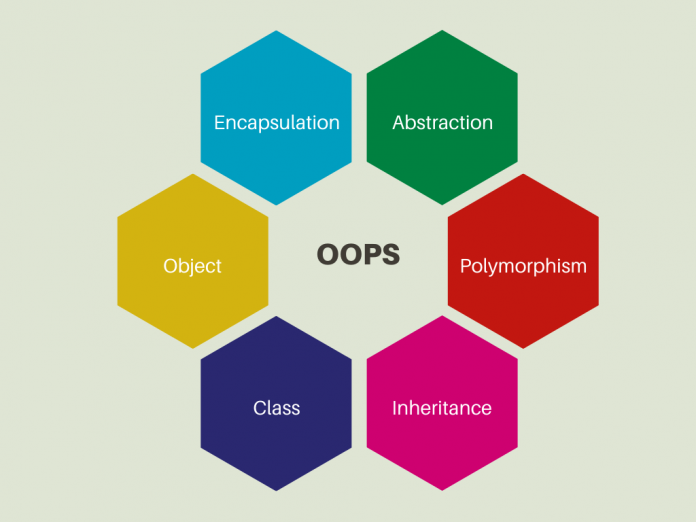The basic principle of object-oriented programming is to make objects and recycle them to the entire program. After that, we can manipulate them to get the best results. The OOPs concepts in Java usually are based on abstraction, encapsulation, inheritance, and polymorphism.
However, let’s get into the basics of OOPs concepts. The full meaning of OOPs is an object-oriented programming language, and Java is one of them. We have seen that many leading companies like Stackify built tools like Retrace and Prefix based on Java.
By the way, here you are going to know about all the basic and intermediate of OOPs concepts in Java. We will learn about the definition, lists, types, how it works, and finally, the benefits and drawbacks of these concepts.
Table of Contents
The Definition of OOPs Concepts in Java
According to software programmers, the OOPs concept defines the data types on the data structures. Besides, we can apply the data types of operation on the data structures as well.
The basic idea on the object-oriented programming of Java is OOPs concepts. And we know that Java uses abstraction, encapsulation, inheritance as well as polymorphism. However, if you can learn the main foundation of these terms, you are on the track of Java.
In addition, Java lets us do programming without foiling security. So, Java OOPs concepts are able to reuse the methods and variables to make a better program.
The Four Major OOPs Concepts in Java
We usually know that the OOPs concepts consist of four main parts.
They are:
- Abstraction.
- Encapsulation.
- Inheritance.
- Polymorphism.
Below we are presenting some definitive details on these concepts.
- Abstraction: Abstraction lets us do many compound programming simply and easily. For example, you can think about the TV and its remote control. You control the TV very easily without bothering. By the way, we as general people do not know how this is programmed behind the scene.
So, you will never need to be disturbed by the program in the background. You will just enjoy the TV and its program.
The meaning of abstraction is creating a complex program using simple methods such as objects, classes, and variables. This method is so vital that it will help us not repeat the same program again and again.
- Encapsulation: This is a method of keeping your code safe and secured within the class. So, encapsulation is a way of putting the fields in a class. After that, it provides access to the data in a medium of public methods.
So, the programmer community considers it one of the best OOPs concepts of java programming language. The central theme of this concept is hiding the variable of a class from another class.
In addition, you can’t enter the class very smoothly because you will require current class methods to access it. For instance, a student can never access a school without getting admitted to a school class.
- Inheritance: This is one of the most notable types of java language concepts regarding object-oriented programming. However, you can assume the purpose of this concept by its name, Inheritance. So, it can inherit from previous existing classes.
Also, inheritance takes its properties from the parent object as an inheritance. Besides, the purpose of this concept is to make a parent-child relationship between the classes. By the way, we can get a natural mechanism to organize any kind of software.
Basic Terms Of Inheritance:
- Super Class: superclass is the parent class of the inheritance feature. Besides, we can also call it base class as other classes take inheritance from it.
- Sub Class: subclass is the child class of the inheritance feature. So, this class inherits from its parent classes. Besides, we can also call it derived class, extended class, or child class as usual.
- Reusability: The central theme of inheritance is reusability. And this feature is vital for effortless coding and readability. So, we do not need to take another class if we already have a class like this.
- Polymorphism: You can use this program to utilize the same phrase in various programs. There are two kinds of polymorphism we can get. For example, the first one is method overloading, and the second one is method overriding.
However, method overloading implies different meanings by its code. On the other hand, method overriding means the different meanings by a value of provided variables.
Other Types of OOPs Concepts in Java
There are four more OOPs concepts in Java available for us. So, these concepts are also vital, along with the significant four concepts. However, let’s get into the details.
- Class: usually, a user chooses a blueprint class, and we can create an object from here. By the way, it usually calls a bunch of properties and methods that are familiar to all objects of a similar kind. The class statements may have these types of elements. Such as,
- Modifiers: as far as I know, a class may be a public and default entrance.
- Class Name: The name of a class will start with a letter.
- Superclass: you can take a name of a parent of the class if you have one. Besides, it will proceed with the keywords you have. By the way, you can only extend a class to one parent.
- Interfaces: if you have any interfaces, you will get an implementation by a comma-separated list. Besides, the implementation will precede with a keyword extension. Also, you will be able to implement more than interfaces.
-
Body: you will need to cover the class body with braces, such as { }
- Object: This concept is a fundamental unit of object-oriented programming. Besides, it states the real-life entities in object-oriented programming. A typical Java code can build lots of items and contacts by invoking systems. However, an object is usually formed of three things. Such as,
- State: An attribute takes the responsibility of an object like this. Besides, it can also state any kind of properties on an object.
- Behavior: A method represents the behavior of an object. Also, you can reflect the response rate of any object with another object.
- Identity: This will give an object identity and make an object contact with another object very quickly.
- Method: A method is an interesting kind of object we will get into. Mainly, it is a bunch of statements that can do some fixed work and give results to the caller. However, a method is also able to do some work without doing anything in return.
Also, you can reuse your codes by rewriting them always. So, this method is a time-saving method and helpful for fast programming. Unlike C, C++, and Python, each technique will have to be a part of the Java class.
Therefore, methods are time-saving systems and enable not to retype the code.
- Message Passing: you may know that an object contacts each other by sending and taking information every time. In short, if you send a message for an object is an application for doing a procedure. On the other hand, another object receives it and then executes it.
Moreover, message-passing usually specifies the object’s name, functions, and the information to send it correctly.
How OOPs Concepts in Java Work
The main concepts of object-oriented programming in Java is it can be reusable in various methods. Also, you will not have to think about its security issues. So, this is why Java is the most sought programming language in the programming world.
By the way, here, we will talk about how the object-oriented programming concepts work in Java. Here they are.
How Abstraction Works
Usually, the abstraction lets programmers use Java to build a tool that can be used again. For instance, you, as a programmer, can make various types of objects. By the way, these objects might be some variables, functions, and data structures.
Besides, you can make various types of classes of objects too. Therefore, all these things state the items we are looking for.
Let’s give you an instance; an address can be a class of variables. And that class tells every address should have a specific name, street name, city, province, and zip code. However, the main object is the matter can be an employee of your office or a customer address.
How Encapsulation Works
This is a concept of security in java programming. This method lets us do java programming without compromising the security of the code. Like abstraction, it saves our time a lot while coding.
In addition, encapsulation is one of the powerful OOPs concepts that can provide the best usability. For instance, you wrote a code that will call some specific data from your database. But this process might be useful again to recycle to get from another database and processing systems.
How Inheritance Works
All the OOPs concepts of Java are time-saving, and inheritance is not behind them. Besides, you may already guess that the name inheritance does mean. It inherits from its parents and prime classes.
Additionally, inheritance can adopt new classes from another class. By the way, the other name of inheritance is subclass or child class. And we utilize the keyword extends to state the new class, and that new class will inherit properties from its parent class.
How Polymorphism Works
We know polymorphism as reference objects often as it tends to refer to a parent class. For example, you can create a class named “cow” to extend the class “animal.” Additionally, this class will also be used as a class of “edible animals.”
Therefore, the class “cow” here is polymorphism, and it inherits its properties from both “animal” as well as “edible animal.”
By the way, I am giving you two more instances for better knowing. These two methods are the method of overloading and the method overriding. Let’s talk in a little bit of detail.
Method Overloading: this concept usually takes OOPs polymorphism idea to the next level. Because a piece of a method can execute various functions depending on its caller’s context, method overloading can be defined by many ways and arguments.
Method Overriding: This method is a child system of OOPs polymorphism in all kinds of procedures. In addition, it lets the coder utilize this specific method in various types. However, these ways depend on the object and classes you are going to use.
Best Practices for OOPs Concepts in Java
The main goal of the OOPs concept of Java is making coding fast and simple. And we will do it without sacrificing the security of the program. You do not need to repeat ourselves as the core concept is to minimize the extra use.
And if you wish to reuse and recode the program, the encapsulation will help you do it. One more thing you should know that all the variables or methods are private.
Moreover, Java maintains a single responsibility principle as the main idea behind it. Whatever classes you keep, but you will get only one function. And finally, you can cover all the modifications, but you should open the extension.
To Conclude
I think you have a clear idea of OOps concepts in Java from this article. For example, you get to know about the four significant types of object-oriented programming. However, after gaining knowledge from this, you can create your java program more simply and securely.
Moreover, your java programming will also be fast and time-saving as you can reuse your code often. However, the Java language is one of the most demandable subjects in the world. So, we must know the core concepts of Java and its every corner.
Also, the OOPs concept lets us understand and make concise structures for codings. Besides, this method has made large programs into a fast and easy way. At the end of the discussion, I should say, keep loving Java and coding Java.








